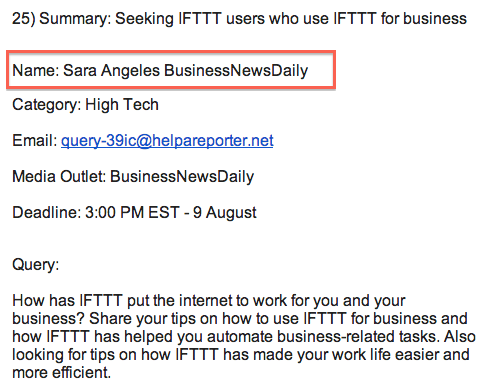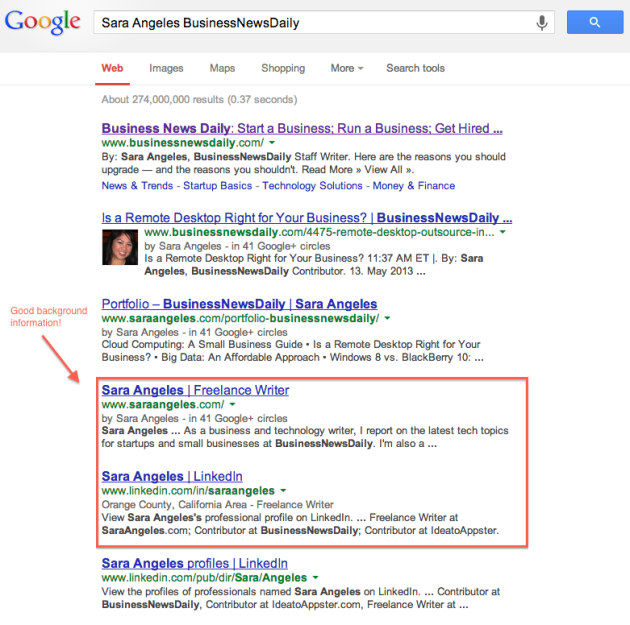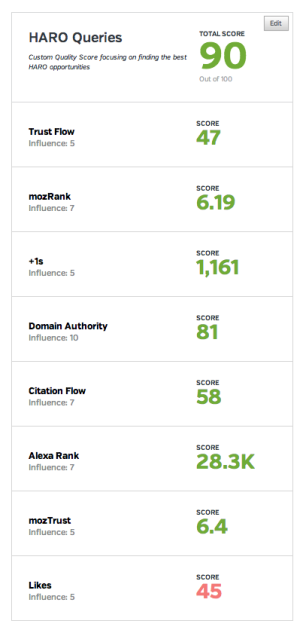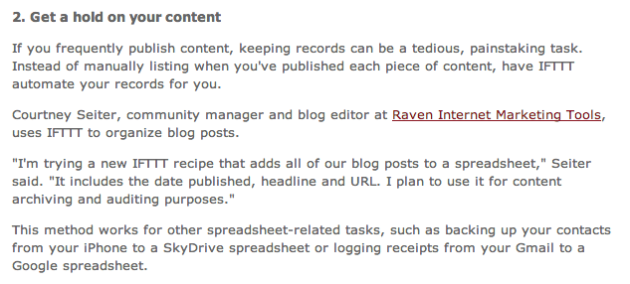If you work in marketing, chances are Help A Reporter Out/HARO is already part of your online public relations toolkit. The service hooks you up with e-mail queries a few times daily from reporters who need experts for specific stories.
It’s a free service, and a great way to build press mentions and thought leadership. But you’ll get a lot of e-mails, which can easily translate to a lot of time spent working up great quotes and ideas with no guarantee that any of that work will even end up going anywhere.
For busy marketers trying to get the best possible press for clients or bosses, this means there are two important elements to making the most of HARO:
- Vetting HARO queries to make sure you’re focusing on the top opportunities.
- Optimizing each response to maximize your chance of success.
Raven customers who subscribe to HARO can use both tools together to increase their chance of great press coverage while decreasing the time it takes to get it done. Let’s follow a real-life HARO example and I’ll show you how.
Step 1: Vetting HARO opportunities
Time is of the essence when the HARO email hits your inbox, so you’ll need a way to quickly determine which opportunities to focus on.
Are you the right fit?
Obviously, your first step is to see if your expertise matches any of the queries. If you’re in a smaller niche, this may not happen often – in that case, no vetting is necessary and you can get going crafting a smart, useful response.
But my expertise is in social media marketing – an area that reporters write about a lot. So I’ll need to move on to a deeper research phase.
Research the writer
Most of the time, the HARO query will include information about the writer and media outlet like so:
Some experts even warn against answering anonymous queries.
First, I’ll do quick search of the writer (assuming his or her name is mentioned) to see where he or she has been published. A little background can be very helpful.
Check out the site
Of course I’ll want to check the site to make sure it looks reputable and like an organization I’d be happy to show off a mention from.

Business News – Organized Website
Looks good!
Research the site
From here, go to Raven to quickly research the domain with Research Central.
Now I’ve got a ton of data to help me determine whether this site provides a good press (and link) opportunity.
You can focus on any metrics that matter most to you, but basically what we’re looking for here is evidence that the site has a decent level of trust and popularity online. My preferred metrics to determine this are:
- Alexa Rank: Score that indicates how popular the site is. Alexa scores go from 1 (the best) to a billion – the lower, the better.
- Domain Authority: Moz score from 1-100 that represents the likelihood of the domain to rank well in search.
- mozRank: Moz score from 1-10 that represents the domain’s popularity.
- mozTrust: Moz score from 1-10 that represents the domain’s trustworthiness.
- Trust Flow: Majestic SEO trust score from 1-100 based on number of links from trustworthy domains.
- Citation Flow: Majestic SEO influence score from 1-100 based on how many sites link to it.
- +1s: The number of Google +1’s for the page.
- Likes: Number of times Facebook users have liked the page (or any comments or re-shares of the page).
Bonus shortcuts
If you find yourself checking out possible HARO requests every day, you can create an even quicker shortcut for this process by creating your own custom Quality Score, where you get to decide the weight of each factor and what scores are pass and fail for each metric.
Here’s what mine looks like with all the metrics I added from above:
Considering all my important HARO factors, this opportunity is a great one! Time for Step 2.
Step 2: Optimizing HARO responses
Now that I’ve weeded out any opportunities that aren’t worth my time and found that one golden query, it’s time to focus on making sure my response is maximized to get it chosen for publication – and that all-important link.
To do this, HARO founder Peter Shankman has a few tips:
Let’s dive in a little deeper, keeping in mind that most of the rules are similar to the way journalists prefer to be pitched with press releases. The overall theme is: have great information, be quick about it, and be really easy to contact.
Be fast
Journalists use HARO because they need sources now. To speed up your response, consider creating a standard template or Gmail canned response you can use for all press responses with the same intro and conclusion – that way, you can just fill out the middle with the relevant details.
Organize your thoughts
Do everything you can to make the reporter’s life easier and you’ll significantly up your chances of keeping their attention.
- Make the subject line “HARO: (Whatever they named their query)” so they can quickly identify it.
- Bullet-point your main thoughts.
- Make sure you address all of their questions, and try not to ask any of your own.
Stay on-topic
You’re trying to help a reporter, not annoy one. This isn’t the time for off-topic pitches or making a new friend. Just answer the questions.
Be brief
Journalists don’t have time to slog through a lot of text – they’re looking for pithy, perfect quotes they can plug into what’s likely an already partially-formed piece. Get to the point and your chances of being quoted will increase.
How can they contact you?
Don’t forget to list all the ways they can contact you – the faster the method, the better.
Add value (but not attachments)
State your qualifications up front. If you’ve written a white paper on just the topic the reporter’s asking about, add a link to it (just no attachments – HARO will strip them out).
Proofread
Give your response one last read-through before you hit Send (or have someone else in your office take a quick look. Grammar and spelling goofs don’t help you look like an expert on anything.
Follow up
Once you craft the perfect response, you can sit back and wait for the press mentions to roll in – or you can go the extra mile.
You’ve already done a search on the reporter – why not follow them on Twitter or even add them to a special Twitter list of press sources so you can pay closer attention to what they post? Maybe there are other questions you can answer, or some common thread you can find to help start a new relationship.
The most promising contacts might also merit a place in your CRM system, where you can keep notes on any conversations and keep your team in the loop.
So did we get that link?
Success! Answering this HARO query resulted in a nice press mention and link for Raven in a story about IFTTT recipes for business success.
And of course, any successful press mentions are worth documenting. I’ll add this one to Raven’s Link Manager so I can keep track of and report my wins in a neat table, complete with metrics and screenshots of the link on the page.

Analyze over 20 different technical SEO issues and create to-do lists for your team while sending error reports to your client.









Great stuff. I will say that I use anonymous queries all the time, though, so thought I’d explain why from the perspective of a journalist. First of all, I do a lot of ghostwriting so I don’t necessarily want my name associated publicly with the sites I write for. Second, a lot of sites I write for have competitors regularly scouring HARO, so I don’t necessarily want them to know that their biggest rival site is working on a piece on a certain topic and scoop us. And third, I am endlessly inundated with pitches forever from certain people (and often get some inappropriate/creepy messages as well), so I like to only respond with details to emails from sources that seem relevant. I do try to write “for a major magazine” or “for a major health site” when writing anonymous queries.
Thanks, Yael! All those reasons make perfect sense. I’m happy to have the insight of a HARO-using writer here–thanks for taking the time to contribute.
Thanks! I guess I can’t speak for the rest of ’em. 😉